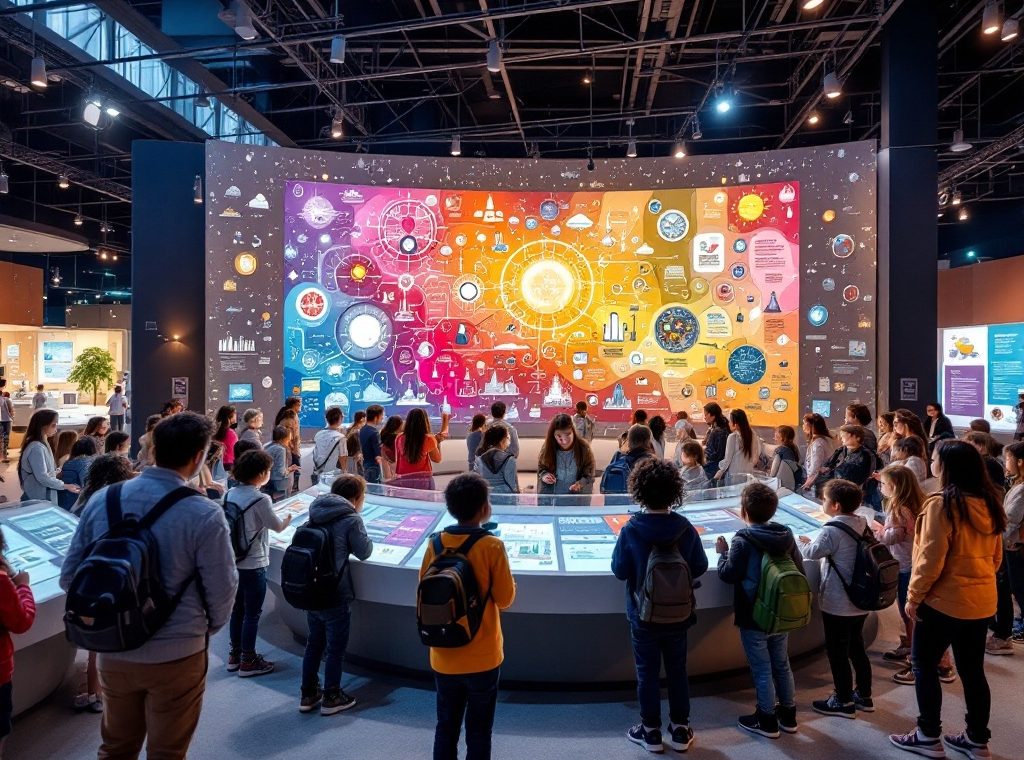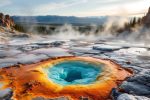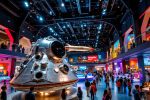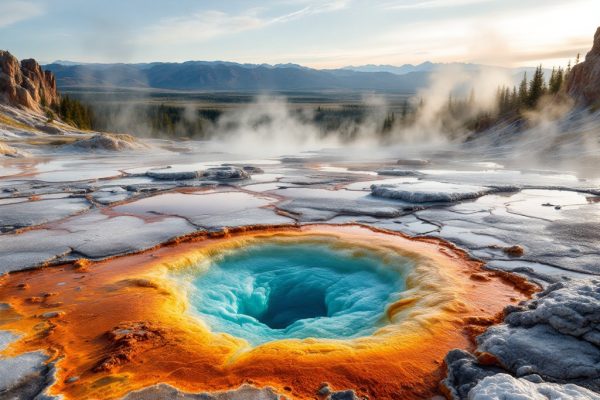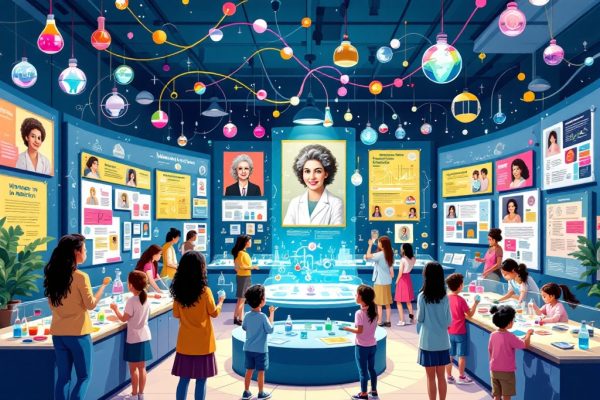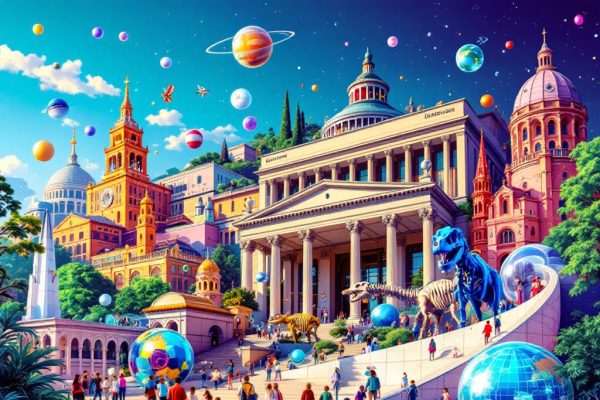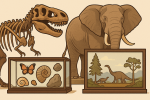The Role of Science Museums in Education
Ignite a passion for science! Discover how science museums transform learning into an adventure, bridging the gap between classroom theory and real-world application. From interactive exhibits that bring complex concepts to life to valuable resources for educators aligned with Next Generation Science Standards, explore the vital role these institutions play in fostering STEM literacy for all ages. Dive in to learn how museums enhance education, engage communities, and inspire lifelong curiosity.
Important information
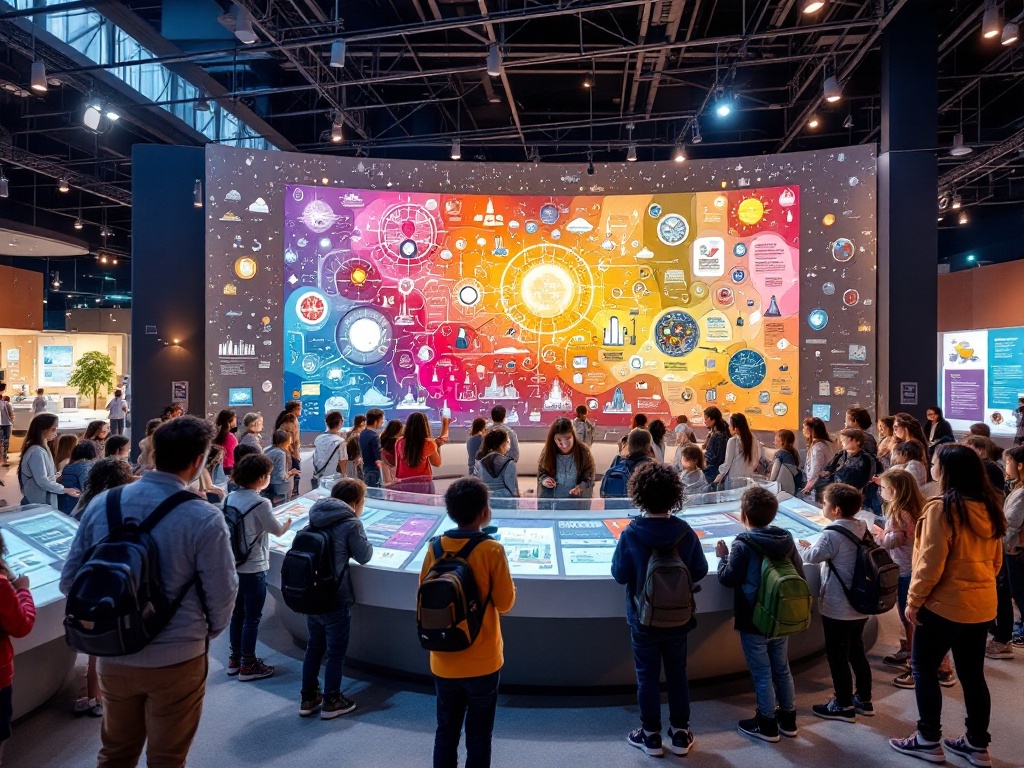
- Science museums offer hands-on learning experiences that make STEM accessible and engaging for diverse audiences, boosting understanding and retention.
- They complement formal education by aligning programs with school curricula and supporting teachers with NGSS implementation and innovative resources.
- Museums foster lifelong STEM engagement through interactive exhibits, workshops, and programs that spark curiosity and exploration.
- They serve as community hubs, partnering with schools and local organizations to broaden access to STEM education and promote science literacy.
- Museums adopt a two-generation learning approach, creating shared science experiences for families and strengthening community bonds.
The Role of Science Museums in Education
Science museums are vital learning centers offering engaging, hands-on experiences that complement classroom education. They spark curiosity and ignite a passion for science by letting visitors explore real-world concepts through interactive exhibits. With diverse resources and activities catering to various learning styles and ages, museums boost understanding and retention of scientific principles. Moreover, they serve as community hubs, encouraging collaboration and fostering discussions among diverse visitors, truly bringing science to life.
How Science Museums Enhance STEM Education
Science museums play a vital role in enhancing STEM learning by offering hands-on experiences that complement classroom education. They engage diverse audiences, making STEM accessible and enjoyable through innovative, interactive resources. By collaborating with teachers, museums develop programs aligned with school curricula, demonstrating real-world applications of STEM concepts. This bridges the gap between theory and practice, fostering critical thinking and problem-solving skills. Interactive exhibits encourage exploration and present complex scientific ideas in a simplified manner, inspiring students and potentially sparking interest in STEM careers.
Providing Hands-on Learning Experiences
Science museums offer exciting hands-on learning experiences, encouraging visitors to actively engage with scientific concepts. Interactive exhibits make learning fun and memorable, helping people grasp even complex ideas. Catering to diverse learning styles, museums provide opportunities to manipulate materials, conduct experiments, and observe fascinating phenomena. This fosters critical thinking and problem-solving skills, inspiring a lifelong love of learning.
Engaging Diverse Audiences in STEM Initiatives
Science museums create engaging programs and exhibits for diverse audiences. They promote inclusivity in science and broaden STEM field participation by recognizing various cultural backgrounds and learning styles. For example, museums translate complex STEM concepts into accessible formats, connecting scientific principles to diverse cultural contexts. This expands learning opportunities and encourages active engagement. At the same time, museums strive to balance entertainment with enriching educational experiences.
Positioning as Key Components of the STEM Education Ecosystem
Science museums play a vital role in STEM education by offering enriching experiences that extend learning beyond the classroom. They bridge formal and informal learning through hands-on activities, engaging diverse audiences with science, technology, engineering, and mathematics. Moreover, these museums collaborate with K-12 schools, supporting teachers in implementing Next Generation Science Standards. Through interactive exhibits and community programs, they foster family involvement, making learning a fun experience for everyone.
Science Museums as Partners in K–12 Education
Science museums and K–12 schools are forming partnerships to enhance teaching and enrich student learning. These collaborations lead to improved curricula and give teachers ongoing support, including assistance with the Next Generation Science Standards (NGSS) and the development of innovative resources. This creates a more engaging learning environment that significantly benefits students.
Partnerships with Schools for Improved Teaching and Learning
Science museums and schools are partnering to enhance science education. Museum resources are tailored to complement school curricula, helping educators achieve key learning objectives. These collaborations improve teaching methods and spark student enthusiasm. Museums offer unique, hands-on learning opportunities. However, distance can sometimes limit access.
Supporting Teachers with Next Generation Science Standards (NGSS)
Science museums are invaluable resources for teachers, aligning perfectly with Next Generation Science Standards (NGSS) and facilitating their effective implementation. They offer professional development and curriculum materials, empowering educators to meet NGSS requirements through workshops, training sessions, and access to innovative teaching tools. Moreover, museums provide hands-on learning experiences that complement classroom instruction, making learning both engaging and memorable. For example, a museum visit can transform a lesson on simple machines into a real-world exploration of levers and pulleys, or bring the solar system to life through planetarium shows and interactive exhibits. These experiences make complex scientific concepts more accessible and inspire a deeper understanding and appreciation for science.
Developing Innovative Curriculum Resources
Science museums are crucial partners in developing innovative curriculum resources aligned with the Next Generation Science Standards (NGSS). Museum professionals and teachers collaborate to create materials that meet classroom needs and enhance science instruction. These resources often incorporate hands-on activities, inquiry-based learning, and assessments to ensure relevance and engage students effectively. Examples include lesson plans, interactive exhibits, and digital tools, all designed to make learning fun and impactful.
Museums’ Role in Informal Learning Environments
Museums revolutionize learning by offering interactive exhibits that breathe life into subjects, unlike traditional classrooms. This immersive experience ignites a lifelong passion for STEM, nurturing curiosity and exploration in learners of all ages. These informal environments bridge the gap between theory and practice, clarifying complex scientific concepts. Interactive displays cater to diverse learning styles, enhancing both comprehension and retention. Moreover, museums provide valuable resources for educators and students, complementing classroom lessons and fostering a deeper appreciation for science and technology. Museums transform learning into an adventure.
Benefits of Museum Learning
- Interactive exhibits bring subjects to life.
- Inspires a passion for STEM.
- Encourages curiosity and exploration.
- Bridges the gap between theory and practice.
- Clarifies complex scientific concepts.
Museum Resources and Impact
- Caters to diverse learning styles, improving comprehension and retention.
- Provides valuable resources for educators and students.
- Complements classroom lessons.
- Fosters a deeper appreciation for science and technology.
- Transforms learning into an adventure.
Providing Experiential Learning through Interactive Exhibits
Interactive exhibits transform science into a dynamic experience, allowing visitors to conduct experiments and explore concepts directly. This hands-on approach fosters deeper comprehension of complex ideas and improves knowledge retention. Science museums also cater to diverse learning preferences.
Enhancing Lifelong STEM Engagement
Science museums ignite a lifelong passion for STEM through interactive exhibits, workshops, and captivating programs. These inspire curiosity and promote continuous exploration of science, technology, engineering, and math. Hands-on experiences bring these concepts to life, while real-world applications showcase their relevance. By welcoming visitors of all ages, museums make STEM accessible and exciting, fostering deeper understanding and lasting appreciation for these fields.
Professional Development Opportunities for Educators
Science museums are invaluable partners for teachers, providing enriching resources such as professional development workshops, curriculum materials, and captivating field trips. These workshops equip teachers with innovative, inquiry-based strategies, integrating technology and demonstrating the effective use of museum resources. Educators gain access to ready-to-use materials and lesson plans. Field trips offer hands-on learning that reinforces classroom concepts and ignites student interest in science.
Museums offer continuous support through ongoing training and mentoring, keeping teachers abreast of scientific advancements and promoting effective teaching strategies. These resources are aligned with educational standards, such as the Next Generation Science Standards (NGSS).
Collaboration between teachers and museums is essential. This partnership allows for the development of resources tailored to specific classroom needs, creating relevant and engaging materials for students. Ultimately, this ensures museum resources effectively support and enhance STEM education in the classroom.
Offering Ongoing Support and Training
Science museums offer valuable professional development opportunities for educators. These include: workshops, mentoring, and readily available online resources. These programs empower teachers to incorporate inquiry-based learning and STEM practices into their classrooms. Museums also provide specialized training on effectively using museum resources and exhibits, helping teachers extend museum learning into their teaching environments.
Informing Resource Development through Teacher Collaboration
Museum resource development thrives through teacher collaboration. Teachers provide insights into classroom needs and curriculum objectives, ensuring resources are practical and engaging for students. This effectively bridges museum learning with classroom lessons, fostering impactful learning experiences.
Teacher’s Role
- Advise on age-appropriate materials.
- Offer valuable feedback on activity design.
Museum’s Role
- Contribute specialized collections and exhibits.
- Provide unique expertise.
This synergy enhances education, allowing museums to better serve both students and educators.
Fostering Family and Community Engagement in Science Education
Two-generation learning programs engage both children and adults, creating shared experiences. These programs recognize the profound influence families have on a child’s learning and build upon that foundation.
Community partnerships broaden a museum’s impact. Museums collaborate with various local organizations, such as schools and community groups. They host events in community centers and partner with schools on curriculum development. Outreach to underserved populations expands access to science education and integrates the museum into the community’s fabric.
Developing a Two-Generation Approach to Learning
Science museums foster two-generation learning, creating shared experiences that benefit the whole family. This approach improves science literacy for both children and adults as they discover and explore together, strengthening family bonds.
Facilitating Community Partnerships and Outreach
Science museums often collaborate with community organizations like schools, libraries, and community centers to enhance learning. They broaden access to STEM education and engage diverse audiences through outreach programs such as workshops and public events, promoting science literacy. For example, a museum might partner with a library to offer a coding workshop, introducing computer science to a wider audience. Museum staff also visit schools, presenting interactive science demonstrations. However, effective partnerships depend on careful planning and clear communication to ensure mutual benefit.
